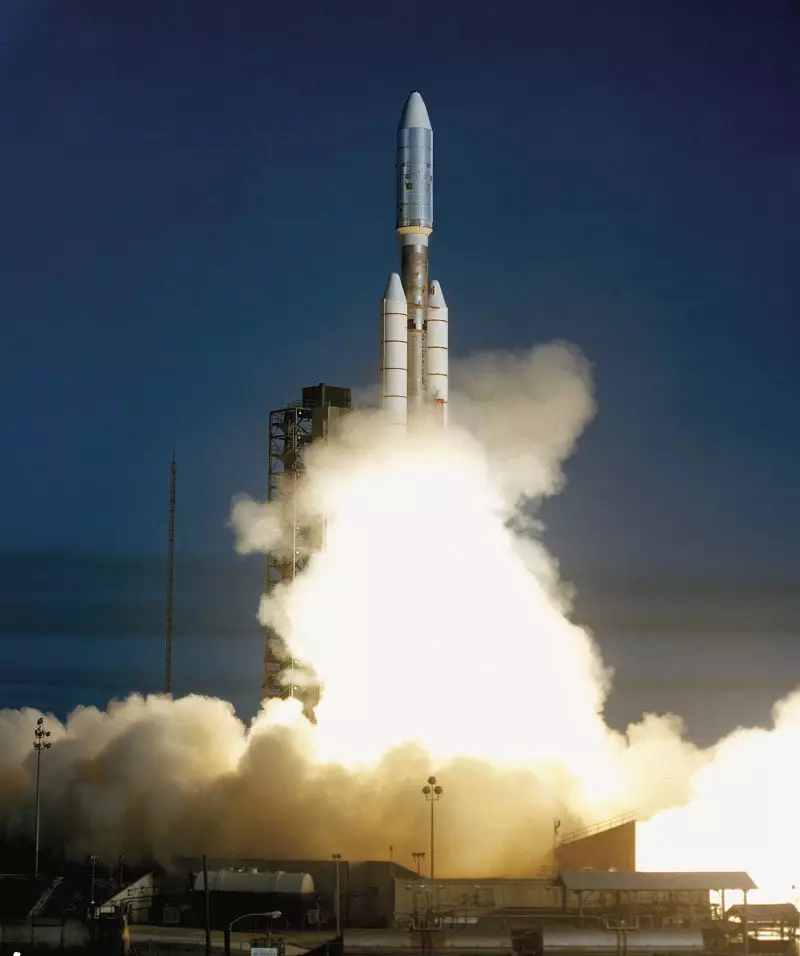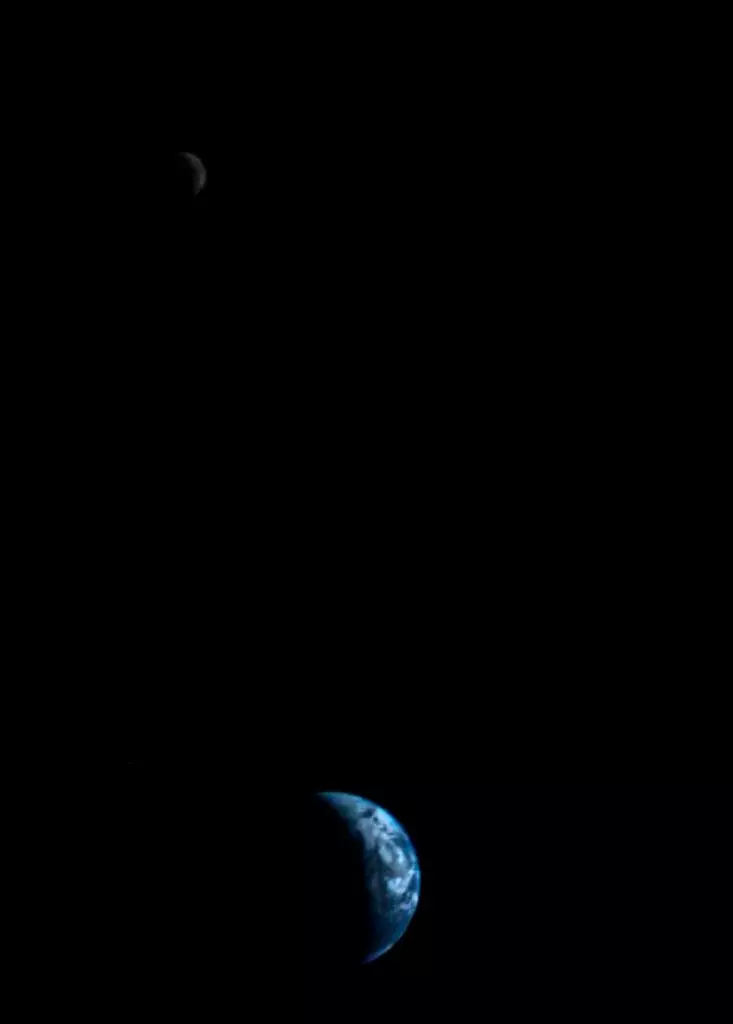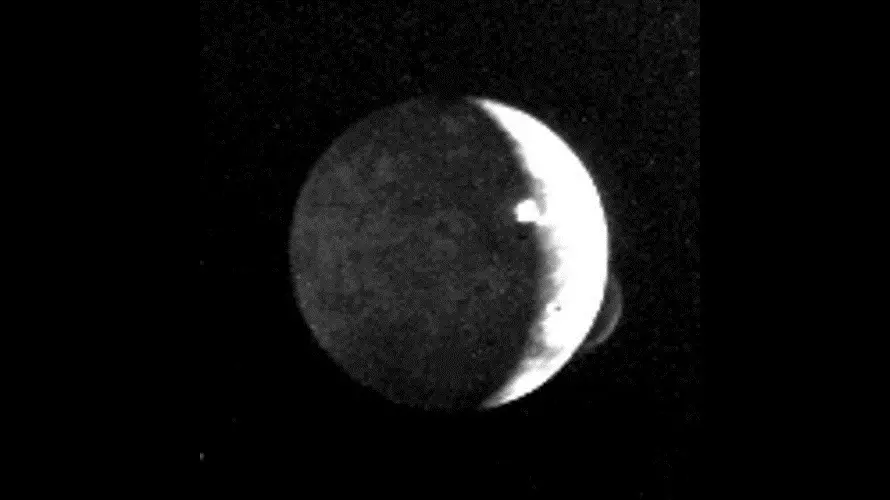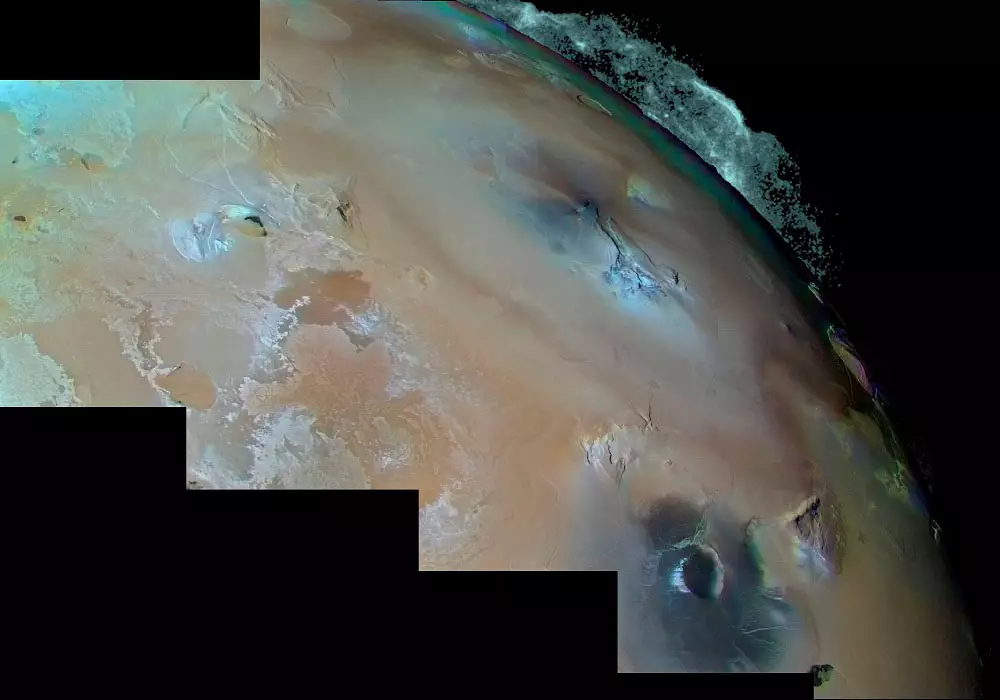This opening story, which once and forever changed the presentation of scientists about satellites of the planets of the giants of the solar system.
Grand Tour - Voyager
In the late 60s of the last century, NASA had a GRAND TOUR space program, within which scientists planned to send four devices of the solar system to external planets. Two in 1977 - to Jupiter, Saturn, Pluto, two more in 1979 - to Jupiter, Uranus, Neptune. But, as often happens in the space industry, the US government has significantly cut off the project's financing. Cured in favor of the already approved Shttl program - from 1 billion dollars to 360 million dollars. NASA specialists revised the project and decided to send two instead of four probes. Yes, and the number of the test bodies limited. Instead of six now, there were three of them: Jupiter, Saturn, Titan. The last world was of particular interest. The list includes due to the fact that this is the only satellite of the solar system, which has an atmosphere.

Two mariner series probes were prepared for the flight: "Mariner-11" and "Mariner-12". The stations of this type of NASA used since 1962, at different times they were sent to Venus, Mars and Mercury. The Grand Tour program was renamed Mariner Jupiter-Saturn, and in 1977 the project was given a new name - Voyager. Now the probes were called "Voyager-1" and "Voyager-2". Both of them went on the road in 1977 with a difference of 16 days. It was originally planned that the service life of the apparatuses would be 5 years, but, as you know, their flight has been going on for almost 44 years.
Cameras "Voyagerov"
On board "Voyagerov" there are two television cameras - wide-angle and narrow-angled. Focus distances of their lenses 200 mm and 1500 mm, a viewing angle of 3.2 ° and 0.42 °, respectively. The NASA website states that the permits of the narrow-angled chamber are enough to read the newspaper heading from a distance of 1 km. At that time, these were the most advanced cameras ever mounted at space stations.
The data of the devices are saved on the digital ribbon drive. During the study of the planet or his satellite, these data was accumulated much faster than they could be transferred to Earth. In other words, during a random to the planet, the probe did, roughly speaking, 1000 shots, and the memory was enough only at 100. Therefore, to speed up the transmission of probe information, NASA combined into a single network of radiotheloscopes of the DEEP Space Communications network Deep Space Network (DSN). According to the NASA site, the Voyager-1 data is transmitted to Earth at 160 bps, 34-meter and 70-meter DSN antennas are used to receive a signal.
[Read more, as spacecraft transmit pictures to Earth, you can from our article "How scientists get pictures made by spacecraft"]
Each camera has its own filter ring, which includes orange, green, blue filters, they can be combined to obtain images in almost true colors.
Here is an example of shooting "Voyager-1" using light filters. The picture of the Earth and the Moon is made from a distance of almost 11.7 million km about two weeks after launching the probe:

[Story of the snapshot in our material: "The first joint portrait of the Earth and the Moon in history. Cult snapshot, which 43 years ago made "Voyager-1" "]
Jupiter and Io
In early 1979, Voyager-1 began to close with Jupiter. In parallel, he made pictures of the Galilean gas giant satellites. Images of these satellites have not disappointed scientists. Experts thought that in the pictures of Voyager-1, they would see the same, no different from each other of the moon, but instead of the astronomers, worlds appeared with a unique geology, not at all like the geology of our moon.

Of all the Galilean satellites, the most scientific community puzzled by IO. According to spectroscopic studies, IO seemed to scientists as a body a little more than the moon, but also rugged by craters. On the desired surface of the satellite of Jupiter, experts expect to find deposits of various salts. But IO turned out to be a real world-mystery without visible shock crater, covered with strange yellow, orange and white sediments. The first pictures of the gas giant satellite pushed astronomers to the idea that some geological processes should occur on IO, which "rejuvenated the surface, washed traces of drum craters."
In March 1979, Voyager-1 took a picture of IO on a long excerpt from a distance of 4.5 million km, which opened the curtain of the mystery of this moon.
In the image, NASA specialists noticed the cloud that was in hundreds of kilometers over the "illuminated" sickle IO. This photo is:

At first, scientists thought that these were just distortions that appeared during the shooting, but after a detailed analysis it became clear that the cloud was real. Since IO has an extremely sparse atmosphere, astronomers concluded that the cloud is a loop resulting from a very powerful volcanic eruption. He was given the designation P1.
A little later, members of the Voyager research group found another train on the border of the day and night (Terminator) of IO, it was denoted by P2.

The new data sent by Voyager-1 showed that P1 is the result of the activity of the active volcano, subsequently called the pele, and P2 is associated with the volcanic closet Patera Locks, in which the rich lava lake is located.
Experts came to the conclusion that there are current volcanoes on IO, and they are most likely the reason for the "young satellite surface", and yellow, white, orange deposits are nothing other than those thrown during eruptions on the surface of the substance: various silicates, sulfur, sulfur dioxide.
On other images of the IO, obtained by Voyager-1, scientists have discovered eight volcanic loops.

The opening of the probe and subsequent observations of the satellite of Jupiter helped the specialists understand that the IO is the geologically active world in the solar system, today it consists of about 400 acting volcanoes.
Material reprinted from our channel
We offer friendship: Twitter, Facebook, Telegram
Watch out for all new and interesting from the world of science on our Google News page, read our materials not published on Yandex Zen
